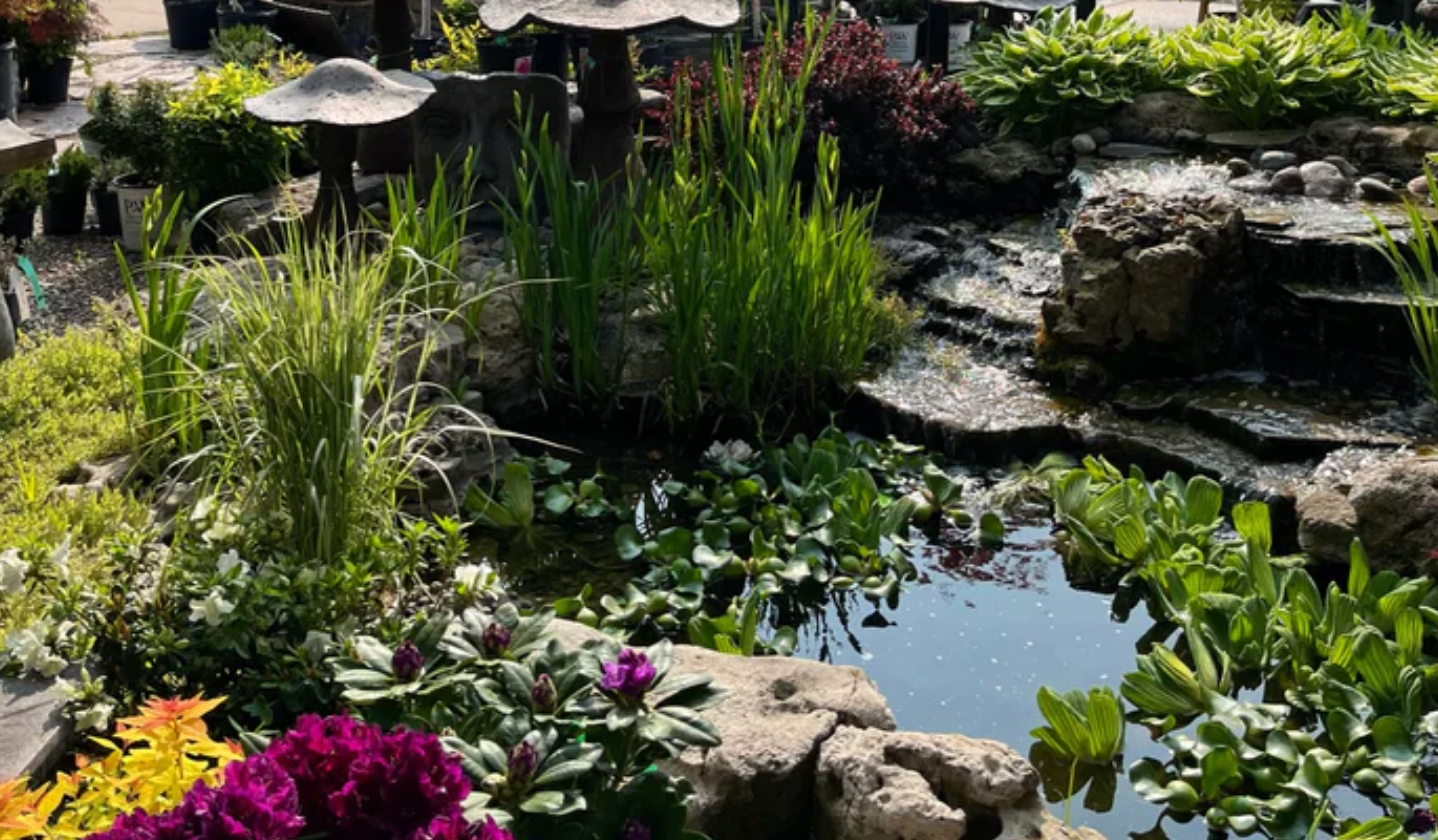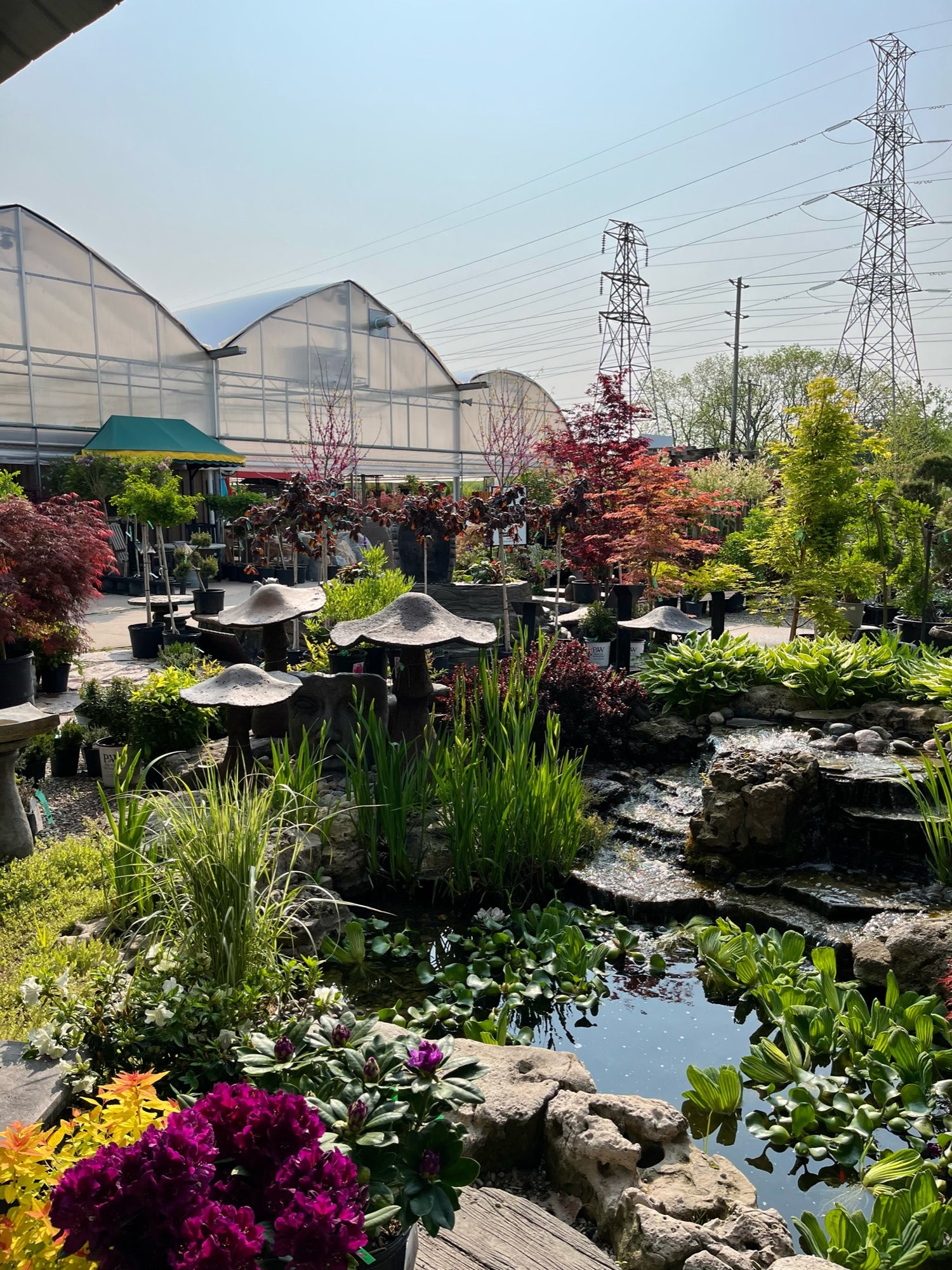
Ask The Experts!
We don't just sell pond products, we are here to share our knowledge and offer continues support as you learn to care for your new water feature! At the Glasshouse we love to educate and share our experience to help you succeed!
Spring Pond Start-Up: Revitalizing Your Aquatic Paradise
As winter's icy grip loosens and signs of spring emerge, pond enthusiasts eagerly anticipate the opportunity to awaken their aquatic haven from its seasonal slumber. Spring heralds a time of renewal and rejuvenation, making it the perfect season to embark on the process of pond start-up. Whether you're a seasoned pond keeper or a novice enthusiast, proper spring pond start-up sets the stage for a season of vibrant growth, abundant wildlife, and tranquil enjoyment. In this comprehensive guide, we'll explore the essential steps and considerations for revitalizing your pond in the springtime.
Pond Maintenance Check List
1. Assessing Winter's Impact
Before diving into spring pond start-up tasks, take stock of how your pond fared during the winter months. Factors to consider include:
- Ice Damage: Assess the pond for any signs of ice damage, such as cracked or displaced rocks, damaged equipment, or structural issues with the pond liner. Repair any damage promptly to prevent further deterioration.
- Debris Accumulation: Remove fallen leaves, twigs, and other debris that may have accumulated on the pond surface or settled at the bottom. Excessive debris can contribute to poor water quality and promote algae growth.
2. Checking Equipment and Infrastructure
Spring is an opportune time to inspect and maintain pond equipment and infrastructure to ensure optimal performance and functionality. Key tasks include:
- Pump and Filter Inspection: Check pumps, filters, and other circulation equipment for signs of wear, damage, or clogging. Clean or replace filter media as needed, and ensure that pumps are operating efficiently to promote water circulation and aeration.
- Lighting and Electrical Components: Inspect pond lighting fixtures, wiring, and electrical connections for damage or deterioration. Replace any faulty components and ensure that all electrical equipment is properly grounded and protected from moisture.
In addition to these species, there are countless cultivars bred for specific traits such as flower color, size, and bloom time. From the classic 'Jane' and 'Ann' hybrids to the striking 'Black Tulip' and 'Sunrise' varieties, there's a magnolia tree to suit every taste and garden style.
3. Water Quality Management
Maintaining optimal water quality is crucial for the health and vitality of your pond ecosystem. Take the following steps to assess and improve water quality:
- Water Testing: Use a reliable water testing kit to measure essential parameters such as pH, ammonia, nitrite, and nitrate levels. Adjust water chemistry as needed to create a suitable environment for fish and plants.
- Algae Control: Implement algae control measures, such as adding barley straw or algaecides, to prevent the onset of algae blooms as water temperatures rise. Consider incorporating aquatic plants and optimizing filtration to naturally regulate algae growth.
- Nutrient Management: Monitor nutrient levels in the pond and take steps to minimize nutrient inputs from sources such as fertilizer runoff or organic debris. Regular water changes and the addition of beneficial bacteria can help maintain a balanced nutrient cycle.
4. Aquatic Plant Care
Spring is a time of renewed growth for aquatic plants, making it essential to tend to their needs and promote healthy development:
- Plant Pruning and Maintenance: Trim overgrown aquatic plants to remove dead or decaying foliage and promote new growth. Divide and replant overcrowded specimens to prevent competition for resources and maintain a balanced ecosystem.
- Fertilization: Consider fertilizing aquatic plants with specialized pond plant fertilizer to provide essential nutrients for vigorous growth and vibrant blooms. Follow manufacturer recommendations for application rates and timing.
- Plant Placement: Arrange aquatic plants strategically to create visual interest and provide habitat for fish and wildlife. Incorporate a mix of submerged, floating, and marginal plants to maximize biodiversity and ecological benefits.
5. Introducing Fish and Wildlife
Spring offers an ideal opportunity to introduce fish and other wildlife into your pond, adding movement, color, and diversity to the aquatic environment:
- Fish Introduction: Gradually introduce fish into the pond once water temperatures reach suitable levels for their species. Monitor fish behavior and acclimate them slowly to minimize stress and ensure a smooth transition.
6. Ongoing Maintenance and Care
Maintaining a healthy and balanced pond ecosystem requires ongoing attention and care throughout the spring and beyond:
- Regular Monitoring: Monitor water quality parameters, fish health, and plant growth regularly to detect any issues early and take corrective action as needed. Keep a logbook or digital record of observations and maintenance tasks for reference.
- Seasonal Adjustments: Adjust pond care practices and equipment settings seasonally to accommodate changing environmental conditions. Prepare the pond for summer heat by increasing aeration and shading, and implement measures to prevent algae blooms.

Spring pond start-up is an exciting time for pond keepers to breathe new life into their aquatic paradise and set the stage for a season of natural beauty and enjoyment. By following the essential steps outlined in this guide, from assessing winter's impact to optimizing water quality, plant care, and wildlife habitat, you can establish a thriving pond ecosystem that brings joy and tranquility for years to come. With proper maintenance and care, your pond will evolve into a dynamic and harmonious habitat, teeming with life and natural wonder, and serving as a source of inspiration and rejuvenation for all who encounter it.


